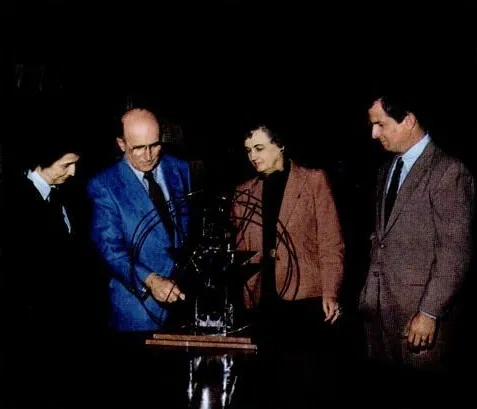The Blanton Comes Alive with the Sound of 100 Tubas [Watch]

How do you describe the sound of 100 tuba players performing a conceptual, abstract, 40-minute piece with both the musicians and conductors improvising? Well, "controlled chaos" comes to mind.
On Sunday, the tubists performed Anthony Braxton's Composition No. 19 for 100 tubas as part of the Blanton Museum of Art's ongoing SoundSpace series. The program, which is overseen by the Blanton's artistic director Steven Parker, DMA '12, brings together musicians and other creative types from around Austin's artistic community to collaborate in performances at the museum that explore the intersection between visual and aural.
The tubists lined up and entered the museum's Rapoport Atrium while playing an intro that sounded like a low buzz. The players then faced different directions, with a different conductor on each side. Over the course of 40 minutes, the groups split up, marched in slow processionals up and down stairs, out into the courtyard of the museum, and ultimately gave new meaning to "surround sound" audio for the audience as the four groups spread out and played from all different directions.

The theme for the Blanton's sixth SoundSpace was "graphic notation," or music that uses abstract symbols rather than a conventional score. Graphic notation can take many forms, and musicians and conductors must interpret how they will read it.
Parker compares that interpretation to decoding a foreign language. "Music is, after all, another form of communication, and 'conventional' notation is one way of writing down this language," he says. "Ultimately in my experience, graphic notation [versus conventional notation] yields greater variety and novelty in the sound worlds it creates."
The Braxton composition, which had only been performed once before, required four conductors. The 100 musicians were split into four groups, and each group had four separate parts within that group. The graphic notation style of music gave both the conductors and the musicians wide leeway for how to interpret the symbols in the music. The musicians only had one day to rehearse the piece.
"You just have to be comfortable with improvising," said tubist James Saliers, DMA '12. "You have to be OK feeling silly and making strange noises. There's not the pressure to play so refined. In some ways, it's kind of liberating. You can just be obnoxious or respond to what you're hearing around you or what the conductor's giving. There's not right or wrong answers, which is nice. It's cool hearing how players interpret some of those symbols. It's fun, and it's easier than you think."
Parker was a Donald D. Harrington Fellow at UT in 2011 when the Blanton invited him to work as an artist-in-residence to create a concert series with cross-disciplinary programming. He has worked to bring contemporary music to a wider audience and to make non-traditional music accessible to new audiences.
"Viewers who encounter contemporary classical works that have often been considered difficult or inaccessible in traditional classical music venues seem to have a more open mind about those works in less-traditional venues such as an art museum," said Adam Bennett, the Blanton's manager of public programs. "And these graphic notation works—works in which the music text was visual from the very inception of the piece's transcription—are meant to be visually and sonically spectacular."
Watch a video of the performance below:
Photo by Kate Curry.
A sample of one kind of graphic notation, from Cornelius Cardew's "Treatise." Courtesy the Blanton Museum of Art.






